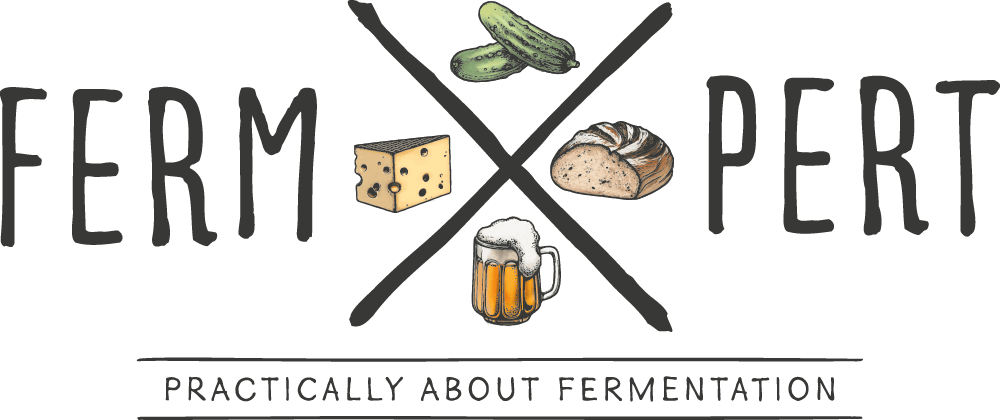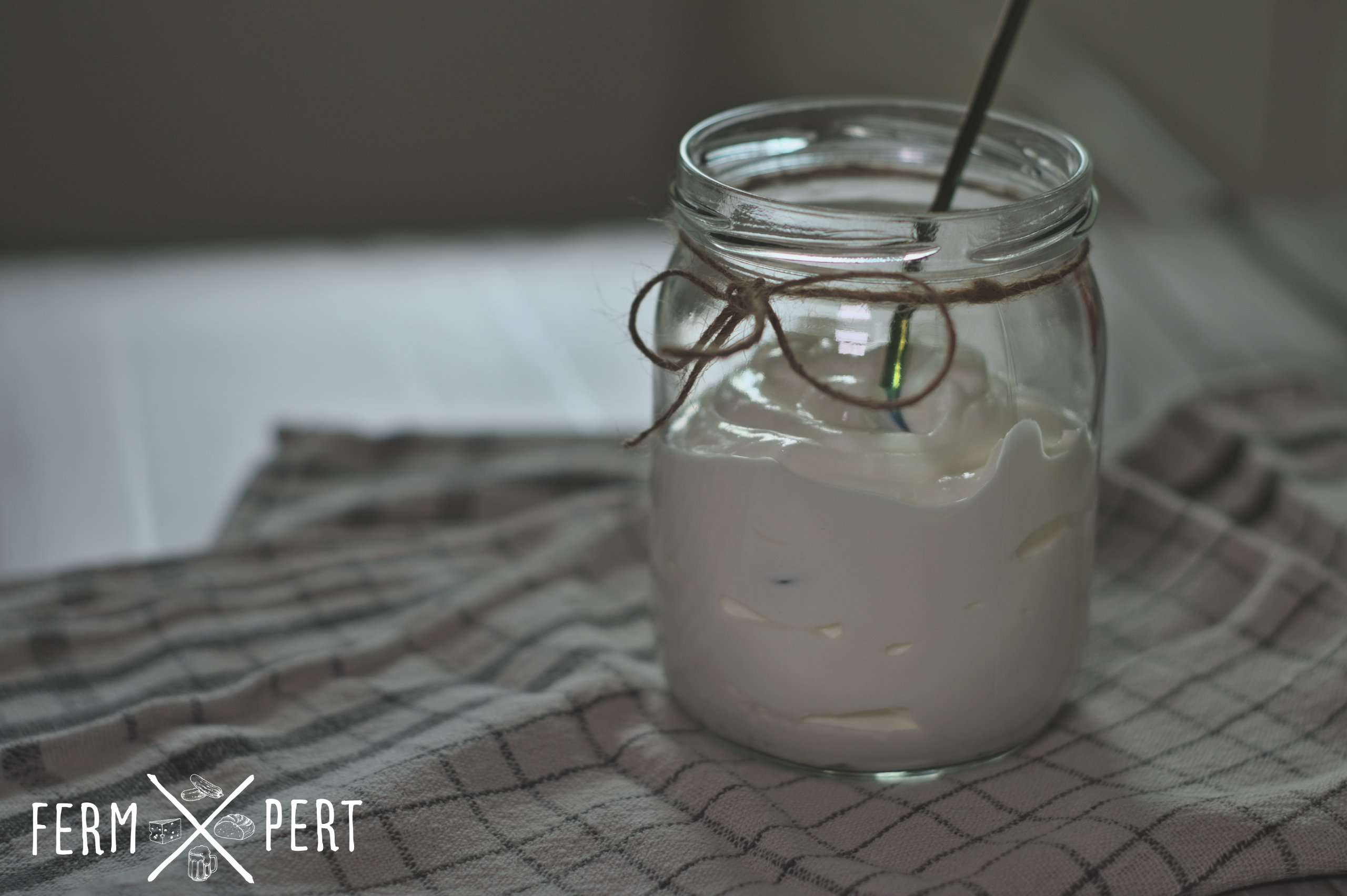Even though sour cream is available in pretty much every Polish grocery store, it is possible that it won’t be available at some point. In such a scenario, it’s possible to make a homemade sour cream using a very simple recipe that uses plain UHT cream, normally added to coffee. The result is barely distinguishable from store bought sour cream and the satisfaction of preparing it is difficult to overstate.
Recipe
- UHT cream
- buttermilk or sour cream or freeze dried Lactococcus lactis bacteria
To a cream container (usually 500 ml) add a spoonful of unpasteurised buttermilk or sour cream (homemade or store bought) and stir it in. In case of using freeze dried bacteria, the dosage should be specified on the package.
Close the vessel with the cream and leave at room temperature for 24 hours. After this time, the sour cream should be ready (it may take longer, up to 2 days, depending on ambient temperature). At this point, the sour cream should be transferred to the fridge.
Additional Information
Cream is usually sold pasteurised (commonly using the UHT method). The proteins therein are mostly denatured by the heat treatment. Despite that, it’s the low pH (4.6 or lower), caused by the presence of lactic acid, breaks down caseine micelles, making the cream thick and viscous.
Only the correct bacteria strain, Lactococcus lactis, guarantees a successful fermentation and the correct flavour. This strain is present in raw cow milk (this is why cream skimmed from raw milk sours on its own), but in the dairy industry, it is widely used to produce not just sour cream, but also buttermilk or quark. This is why buttermilk or sour cream need to be added to unfermented cream – they’re a source of bacteria.
While I use 12% fat cream in my recipe, this works for any fat content. I’ve also successfully made 36% fat sour cream, also known as crème fraîche.
Video Transcription
When I was living abroad, I found myself in a situation when recreating typical Polish dishes was impossible. Some ingredients weren’t available at all or only appeared in gourmet shops selling imported foods. One of the ingredients I sorely missed was sour cream. Had I only known how easy it is to make it at home. The full recipe, as usual, can be found on the blog.
What dishes do you use sour cream in? Let me know in the comments!
As far as ingredients go, this is as simple as it gets. I’m going to use sweet cream and unpasteurised buttermilk. The buttermilk can be replaced with some sour cream from the previous batch or freeze dried bacteria cultures. Had the cream been skimmed from unpasteurised milk, no additional ingredients would be needed at all. Raw cream sours all by itself!
The purpose of adding buttermilk is to introduce bacteria responsible for the souring. Specifically, it’s Lactococcus lactis, naturally present in raw cow’s milk. The bacteria feed on lactose and convert it to lactic acid. A small amount of carbon dioxide is also produced in the process. Not enough for the cream to become fizzy, but definitely enough to create visible air bubbles.
My cream contains 12% fat and is normally added to coffee. It’s runny, similar to milk. Buttermilk, obviously, is much thicker, but still liquid. I will now add a very small amount of buttermilk into the cream. Again: all I’m doing is introducing bacteria to the cream. A couple of teaspoons is plenty. I stir the buttermilk in and close the lid.
The cream will remain on the counter at room temperature for at least a day and a maximum of two. During that time, lactic acid will gradually be produced. Apart from adding flavour, it will also thicken the cream by denaturing its proteins, specifically, casein.
After 24 hours, my sour cream is ready. It looks like this. The air bubbles are clearly visible. The consistency is now thick and gel-like. The flavour is, well, sour. Very nice. But sour cream isn’t served on its own. In order to properly taste it, I’ll make one of my favourite salads, mizeria.
I’ll finely chop some onions, then slice cucumbers and radishes. Some salt and pepper are an absolute must. Finally, I’ll add some sour cream. This is probably more than I need since cucumbers will release a lot of moisture too, but that’s how I like it. A good mix and I’m all done.
While mizeria tastes great as a side dish, I’ll have it with a freshly baked bread roll. It tastes amazing. The sour cream balances out the sweetness of the cucumbers. It all tastes very harmonious. It’s simply delicious!

